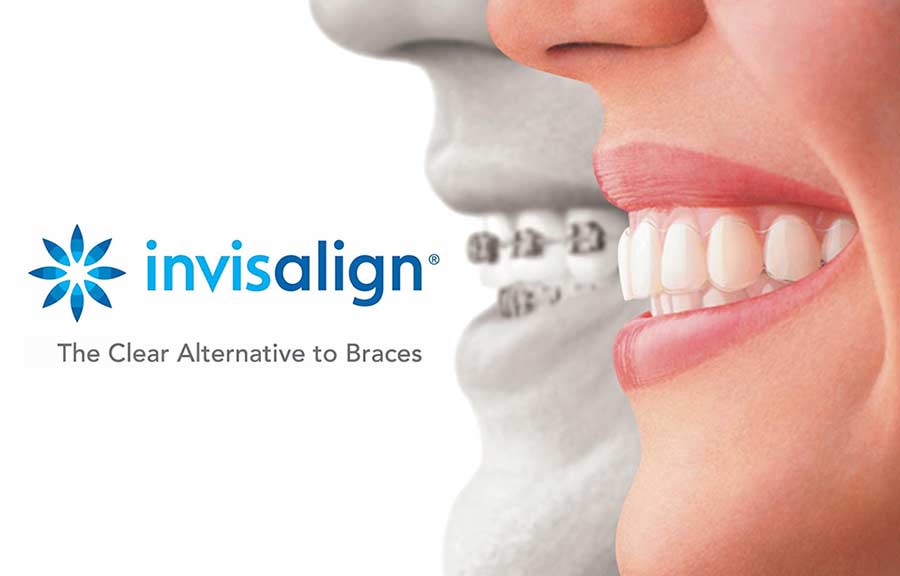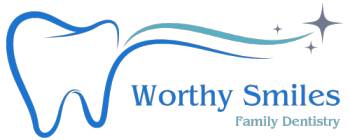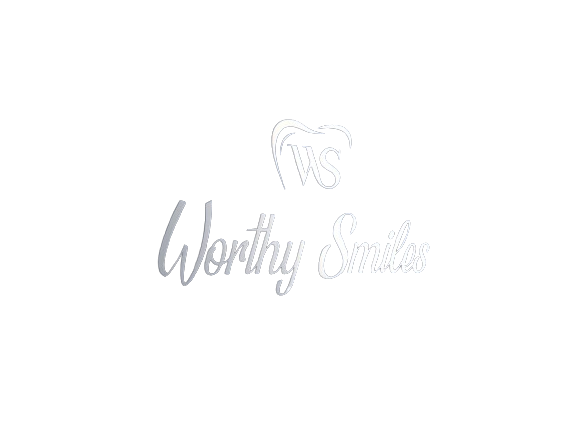Welcome To Worthy Smiles, Office of Dr. Lubna Kadir, Your Best Dentist In Worth, IL.
We offer the dental care you and your family deserve. Visit the most recommended Dentist in Worth, IL and take a positive step towards your oral health.
10 out of 10 patients recommend Dr Lubna Kadir as their Dentist!
⭐⭐⭐⭐⭐ 91 Fantastic Five-Star Google Reviews.
You wouldn’t be scared of going to the Dentist if Dr Lubna Kadir were your Dentist. Dr Kadir is one of Worth’s most caring, compassionate, and honest dentists. Visit us for all your dental needs and discover why we’re not your average dental practice.
Schedule Appointment
Office Hours at Our Worth Dental Clinic
We understand that your visit to a new dental office can feel overwhelming. At our office, Dr. Kadir and her team strive to make your visit comfortable.
- Monday: 1pm-7pm
- Tuesday: 9am-5pm
- Thursday: 10am-6pm
- Friday: 9am-1pm
- Saturday: 8am-3pm
- Wed, Sun: Closed
Dr. Lubna Kadir (DDS), The Best Family Dentist in Worth IL
Welcome to Worthy Smiles, where Dr. Kadir, a seasoned and specialized general dentist, brings a wealth of experience in Cavity treatment, Extractions, Crown procedures, Fillings, Whitening, Root Canals, Dental Check-ups, Dentures, Veneers, Cleanings, and Teeth Cleanings. Dedicated to providing the finest family dental care, our team at Worthy Smiles strives to maintain a cutting-edge office equipped with the latest dental technologies.
Dr. Kadir goes above and beyond by supporting her staff in continuous education, ensuring you receive the highest quality care dentistry offers. Our commitment is to leave you with a smile you can be proud of.
What sets us apart? At Worthy Smiles, not only do we deliver advanced dental services, but we also embody a gentle and caring attitude towards our patients. This approach has resulted in a remarkable patient return ratio, a testament to the trust and satisfaction of those we serve.
Whether you’ve recently relocated to Worth, IL, or are planning a move, rest assured that Worthy Smiles covers your family’s dental needs. Experience excellence in dental care with a personal touch – choose Worthy Smiles for a brighter, healthier smile.

Friendly Dental Clinic
We are dedicated to your comfort when you visit our dental office in Worth. We strive to give you a safe place to talk about your health. Our entire staff can help answer any questions you may have, no matter how silly you think they may be.
Experienced Dentist
Our experienced dentist in Worth, Dr. Lubna Kadir, is here to take you through any dental anxiety you may have. If you have any questions about how we can care for your teeth and mouth, please don’t hesitate to contact us today at (708) 448-6760.
Worth Family Dentist
When we say "family dentist in Worth," we mean it. We take care of your entire family's dental needs in the City of Worth, IL. Come to us for premier dental care with the assurance that Dr. Lubna Kadir will oversee your oral health needs. With a dedicated team and the determination to provide excellent care, we are here for you and your family's oral health.
Invisalign® aligners straightens teeth like no other.
Invisalign is a clear and comfortable treatment for your unaligned teeth. At Worthy Smiles, Dr. Lubna Kadir will work with you to get you the best Invisalign aligners for your teeth alignment. Book your Invisalign appointment today!

Worthy Smiles is A Trusted & Reputed Family Dentist in Worth, IL
Your Emergency Dental Care Partner
At Worthy Smiles, we understand that dental emergencies can strike at any time, causing pain, discomfort, and anxiety. That’s why we’re here to provide expert dental care when you need it the most. Led by our experienced and compassionate dentist, Dr. Lubna Kadir, we are dedicated to helping you regain your smile and peace of mind during dental emergencies.
Common Dental Emergencies in Worth
Dental emergencies can take various forms, and they often require immediate attention. Here are some common dental emergencies that Worthy Smiles can help you address:
Toothaches: Persistent tooth pain can be a sign of underlying issues such as tooth decay, infection, or a damaged tooth. Dr. Kadir can diagnose the cause of your toothache and provide prompt relief.
Chipped or Broken Teeth: Accidents happen, and it can be both painful and unsettling when they involve your teeth. We offer solutions to repair and restore damaged teeth, ensuring your smile remains intact.
Lost or Knocked-Out Teeth: If a tooth is knocked out or lost due to trauma, it’s crucial to act quickly. Dr. Kadir can guide you on the steps before you reach our clinic to increase your chances of saving your tooth.
Dental Infections: Untreated dental infections can lead to severe pain and complications. We provide efficient root canal therapy to relieve pain and save your tooth from extraction.
Broken Dentures or Dental Appliances: If your dentures or other dental appliances break, we offer repair services to ensure they function correctly and comfortably.
Gum Injuries: Injuries to the gums can be painful and may require immediate attention. Our team can assess the damage and provide appropriate treatment to promote healing.
Orthodontic Emergencies: Issues with braces or other orthodontic appliances can be uncomfortable and may need swift adjustments. We are experienced in handling orthodontic emergencies to minimize discomfort and ensure the success of your treatment.
How Worthy Smiles Can Help?
When you face a dental emergency, the last thing you need is uncertainty and discomfort. At Worthy Smiles, we offer a range of services to help you during these stressful situations:
Emergency Appointments: We understand that dental emergencies can’t wait. We prioritize emergency cases and strive to offer same-day appointments to address your needs promptly.
Experienced and Compassionate Care: Dr. Lubna Kadir has years of experience dealing with dental emergencies. Her expertise and caring approach ensure you receive the best possible care during your visit.
Cutting-Edge Technology: We use advanced dental technology to diagnose and treat emergencies precisely and efficiently, minimizing discomfort and recovery time.
Customized Treatment Plans: Each dental emergency is unique, and we tailor treatment plans to address your specific needs and concerns. Your comfort and long-term dental health are our top priorities.
Pain Management: We offer adequate pain management techniques to alleviate discomfort during and after treatment, ensuring you leave our clinic feeling more comfortable.
At Worthy Smiles, we believe that every smile is worth protecting. When a dental emergency strikes, trust us to be your partner in regaining your oral health and confidence. Contact us immediately, and let Dr. Lubna Kadir and our dedicated team care for you during your time of need. Your smile is our top priority, and we’re here to ensure it stays worthy of your confidence.
Meet Our Happy Dental Patients in Worth, IL
Quality Dentistry in Worth - Worthy Smiles offers quality dentistry with exceptional patient care and customer service.
Our dental clinic provides various dental services, including preventive, restorative, cosmetic, and emergency dentistry. We use the latest in dental technology and have a team of highly qualified, experienced dentists and hygienists. Our goal is to provide our patients with high-quality, personalized dental care. We strive to make each visit as comfortable and stress–free as possible.
We are dedicated to your comfort when visiting our Worth, IL office. We strive to give you a safe place to talk about your health. Our entire staff can help answer any questions you may have, no matter how silly you think they may be.
If you have any questions about how we can care for your teeth and mouth, please don’t hesitate to contact us today at (708) 448-6760 or visit our dental clinic in Worth, IL.
We are taking new patients from Chicago Ridge, Oak Lawn, and Palos Heights.
Frequently Asked Questions By Dental Patients
Routine dental check-ups are typically recommended every six months. However, the frequency may vary based on an individual’s oral health needs. Your dentist will assess your oral condition and provide personalized recommendations for how often you should schedule visits.
Dental X-rays emit very low levels of radiation, and the use of protective equipment such as lead aprons and thyroid collars minimizes exposure. Modern technology has significantly reduced radiation levels further, making dental X-rays safe for routine use. Dentists take necessary precautions to ensure patient safety.
Many dentists understand dental anxiety and offer various techniques to help patients feel more relaxed. These may include the use of sedation dentistry techniques, such as nitrous oxide (laughing gas) or oral sedatives. Communicate your fears and concerns with your dentist, as they will be able to provide suitable options to ease your anxiety.
In case of a dental emergency, such as a toothache, dental injury, or severe bleeding, it is crucial to contact your dentist immediately. They may provide guidance over the phone and schedule an emergency appointment, if necessary. If it is after hours or the emergency is severe, consider visiting an emergency dental clinic or contacting a dental helpline for immediate assistance. It is important to act quickly to prevent further complications and alleviate pain.
At Worthy Smiles, your comfort and well-being are our top priorities.
Worthy Smiles is committed to providing comprehensive dental care for you and your family. Our general dentistry services are dedicated to ensuring your oral health and enhancing your beautiful smile.
Our range of dental services encompasses various treatments and procedures designed to address your unique needs. Whether you require routine check-ups or specialized care, we have you covered.
Here are some of the critical services offered by our experienced general dentist:
Preventive Care: Regular dental check-ups, cleanings, and oral hygiene education to keep your smile healthy and prevent dental issues.
Restorative Dentistry: Repair and restore damaged teeth with treatments like fillings, crowns, and bridges.
Cosmetic Dentistry: Enhance your smile’s aesthetics with services such as teeth whitening, veneers, and dental bonding.
Gum Care: Diagnosis and treatment of gum diseases like gingivitis and periodontitis, as well as gum contouring for a more appealing smile.
Dental Implants: Replace missing teeth with natural-looking implants that restore both function and appearance.
Orthodontics: Straighten teeth and correct bite issues with options like braces and clear aligners.
Oral Surgery: Tooth extractions, wisdom teeth removal, and other surgical procedures are performed with precision and care.
Emergency Dentistry: Prompt care for dental emergencies, including toothaches, broken teeth, and oral injuries.
At Worthy Smiles, your comfort and well-being are our top priorities. Our friendly and professional team is here to ensure your dental experience is positive and stress-free. We invite you to schedule an appointment with us today to experience exceptional dental care for yourself and your loved ones. Your smile is our passion! Read our 5-star reviews here.
Complete Dental Care On Your Schedule
Bring Life to Your Smile With A Quality Dentist in Worth, Illinois
Experienced Dentist
Advance Treatment
Friendly Staff
Modern Equipment
A Message For The New Patients in Worth, IL
We understand that your visit to a new dental office can feel overwhelming. Dr. Kadir and her team strive to make your visit comfortable at our office in Worth, IL. You will experience great service in a warm and friendly environment. Dr. Lubna Kadir is amazing at taking care of her patients.
Whether it is just a routine cleaning or if you have not been to the dentist in a while, we are here for you. Our focus is on patients who value our services and in building long term relationships.
During your first visit Dr. Kadir will review all the findings from the exam and radiographs with you and recommend an individualized treatment plan that addresses all your needs. She will provide you with treatment options and will work with you to choose the treatment option you are most comfortable with.
Dr. Kadir strongly believes in doing what is right for her patients. In fact, that is her only priority.
If you want a second opinion, please call us to schedule a no charge consultation appointment. You will have to bring in or email to us your most recent dental radiographs.
Thank you for choosing Worthy Smiles as your preferred dentist in Worth, IL.
Happy Patient Stories
What Our Patients Are Saying about our dental clinic in Worth, Illinois.
I've been coming here for about a decade and absolutely love it. Everyone here is so nice and easy going. I barely feel anything during my normal cleaning appointments. They also offer very fairly priced whitening treatments that I got great results from. Don't think twice about coming here, this place is amazing.

Caroline Nutley
I recommend Worthy Smiles! The office is conveniently located on Harlem Ave right next to the post office. The staff was great. Very friendly and welcoming. Dr Kadir takes great care of my teeth and is mindful of how dental procedures can interact with other health challenges.

Dan Sharp
The very best Dentist I've ever had. 💯 %. A real Professional - As a patient you get a Dentist, Psychiatrist, Therapist all in one. 😃 Nobody was more fearful of going to the Dentist than I was. Not no more. I am in good hands with this Doctor. And you will be too. The whole crew are commendable. Doctor, Dental Assistant and Front desk.

Peter Mandes




